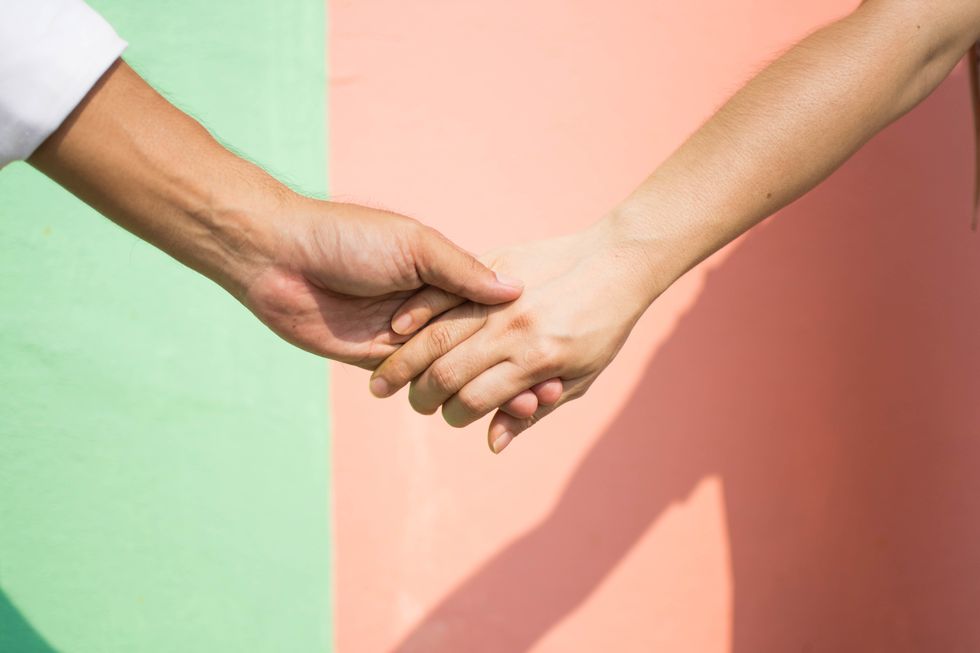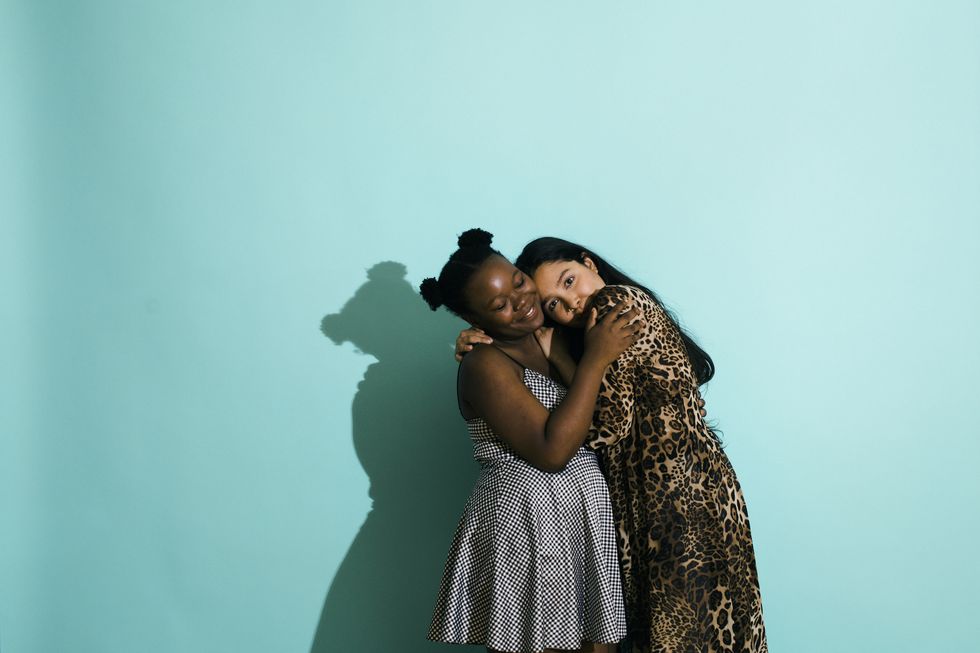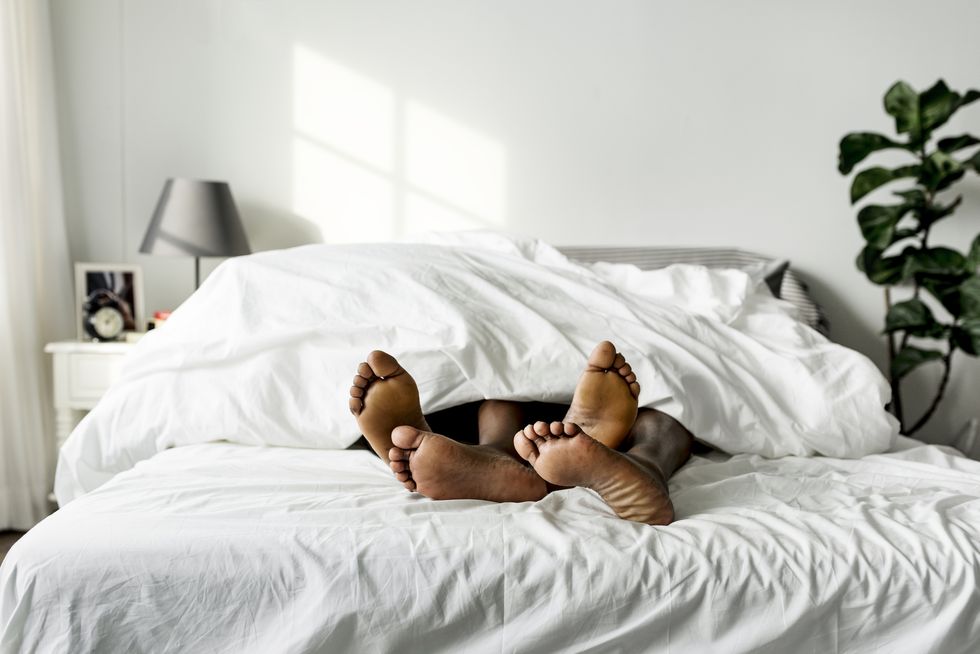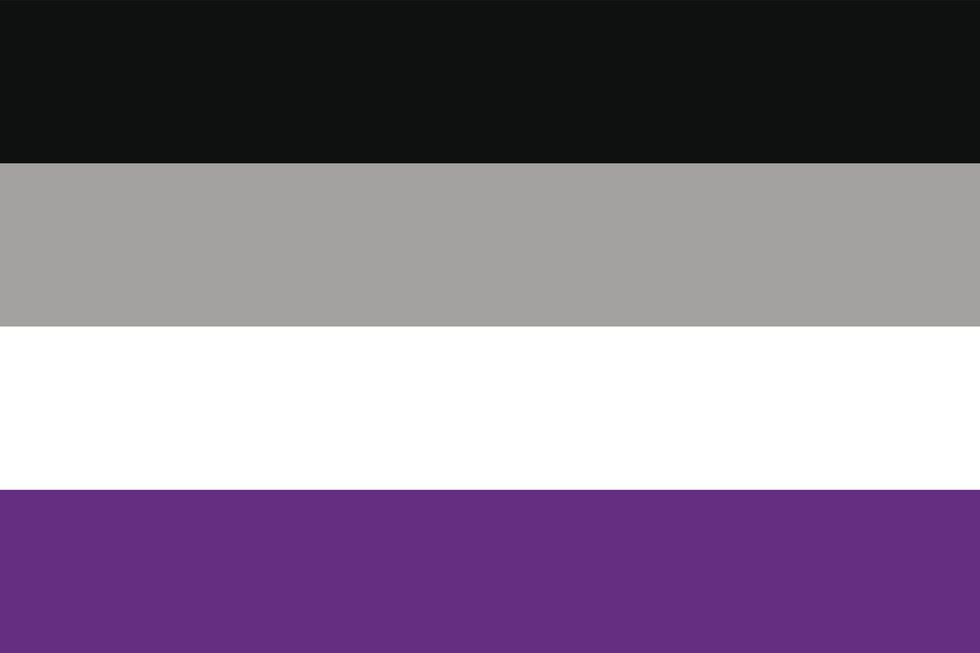Are your friends forever obsessing over their latest TV show crush, but you never understand the attraction? Do you simply have no interest in sex? Perhaps, you find yourself having sex with your partner to satisfy their needs over yours. Alternatively, you may not mind sex, but struggle to find any burning desire for it.
If this sounds like you, you could be asexual.
While pansexual means that gender doesn't come into the equation when forming a relationship, and demisexual means that you don't feel sexually attracted to someone without an emotional connection, asexual means that you don't experience sexual attraction at all.
Here is everything you need to know about asexuality:
How do I know if I'm asexual?
According to the Asexual Visibility and Education Network - AVEN - a person is asexual when they 'do not experience sexual attraction or an intrinsic desire to have sexual relationships'.
'Living in a world that holds the romantic and the sexual as the highest ideals possible is difficult,' explains Bryony, a 20-year-old biology student from Manchester, in the 2012 documentary (A)sexual.
'The most pervasive effect on my life at the moment, as a student, is how many conversations revolve around sex and the sexual attractiveness of certain people that I just don't really want to join in with,' she adds.
How common is asexuality?
Often referred to as 'aces', asexuals make up an estimated one per cent of the population, according to asexuality.org.
That's at least 664,400 people in the UK and 3.27 million in the US.
Is asexuality a 'new trend'?
No, it most certainly is not.
AVEN might have been founded in 2001, but the reality of people living without sexual desires dates as far back as 1890s.
Asexuality.org states that in 1896, German sexologlist Magnus Hirschfeld wrote a pamphlet alluding to people who don't have sexual desire, linking them to the concept of 'anaesthesia sexual'.
Later in 1948, The Kinsey Scale - published in Sexual Behaviour in the Human Male - discovered that 1.5 per cent of adult male subjects reported no socio-sexual contacts or reactions. In 1953, the according to the same research on female interviewees, 19 per cent fell into this category.
The first recorded mention of the specific term 'asexual' came in 1969 in Anton Szandor LaVey's book The Satanic Bible which stated: 'Satanism condones any type of sexual activity which properly satisfies your individual desires – be it heterosexual, homosexual, bisexual, or even asexual.'
Is asexuality the same as celibacy?
While people who are celibate may still experience sexual urges and attraction, they choose not to act on it. However, being asexual means you don't experience sexual attraction at all.
According to Simone Goulding's definition on Cosmopolitan, celibacy and being asexual is 'the difference between abstaining from chocolate cake and having no desire to eat chocolate cake in the first place'.
Can asexual people be in romantic relationships?
Asexuals can get married, have children and really enjoy intimate relationships. Think about it, the difference between romantic relationships and friendships isn't based solely on sex.
Most asexual people have gender preferences and often refer to it as their 'romantic orientation', so you could be heteroromantic (someone who is romantically attracted to a member of the opposite sex or gender) or homoromantic (an invidual with a romantic attraction towards person(s) of the same gender), for example.
Others prefer to remain alone. In an interview with an asexual woman called Annette in the Guardian, journalist Rosei Swash describes her as someone who 'has been single her whole life, something she repeatedly says that she is more than happy about'.
The term for asexual people who aren't interested in romantic relationships is 'aromantic'.
Do asexual people have sex?
Many asexuals do have sex, even if they aren't sexually attracted to their partner.
This could be because they're in a relationship with someone who isn't asexual (asexual people don't only date other asexuals) and therefore make a compromise to please their partner, or they might just not mind having sex at all.
Asexual Andy Holland found himself in a comfortable relationship and tried sex out of curiosity. 'I thought some hidden sexuality might blossom, but it just wasn’t something that I was driven to do like she was,' he told The Independent.
Holland explained that her found sex to be 'quite fun, quite enjoyable', but crucially isn't fussed about it happening again. 'If it happens it happens. I enjoy golf but if I never play it again, I don’t care.'
Can asexual people get aroused?
There isn't a 'one size fits all' concept when it comes to an asexual's likes or dislikes, much like for most individuals regardless of their sexual orientation.
While some asexual people have no sex drive at all, others do, though it isn't directed towards any particular person or gender.
'I can still feel sexual arousal,' asexual Tessa Barratt explained to The Independent in 2009, 'but I never want to act upon it'.
Those who choose never to have sex are often subject to comments such as 'maybe you just haven't found the right person yet', but actually most people tend to know their sexual orientation before they have sex. It's no different for asexual people.
Do asexual men exist?
A 2008 AVEN survey into asexual individuals found that around 70 per cent of respondents were female, but that doesn't mean there are actually more asexual women out there than men.
Stereotypes enforce the idea that masculinity includes being hypersexual, which likely makes it more difficult for men to accept themselves, let alone 'come out'.
Is there an asexual flag?
Created in 2010 by AVEN, the asexual pride flag uses the same colours as the demisexual flag and consists of four horizontal stripes: black, grey, white and purple.
The black represents asexuality, the grey represents gray-aces and demisexuals, the white represents allies and the purple represents community.
Like this article? Sign up to our newsletter to get more articles like this delivered straight to your inbox. SIGN UP





















